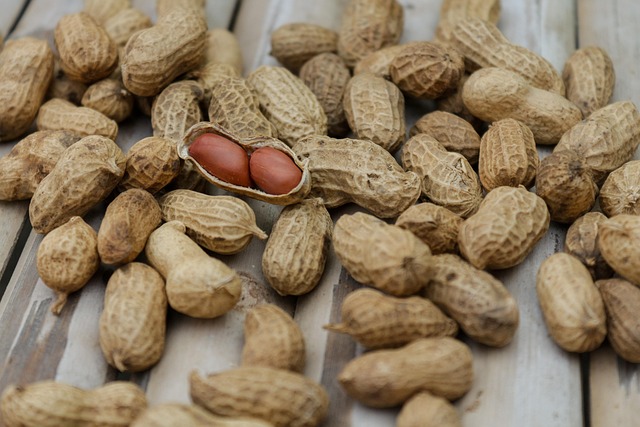When we think of the humble apple, most of us imagine biting into its crisp flesh or slicing it into wedges for a snack. The peels, however, are often discarded, overlooked, and discarded. Yet the outer layer of an apple is packed with bioactive compounds that can support digestion, boost immunity, and help flush toxins from the body. By turning these peels into a gentle infusion, you can create a daily ritual that nourishes both body and mind. This article explores why apple peel tea is more than a clever reuse of kitchen scraps, how it fits into a broader healthy lifestyle, and practical tips for brewing a flavorful, detoxifying brew.
The Nutritional Powerhouse Behind the Peel
Apple peels are a reservoir of essential nutrients. They contain high levels of soluble fiber, primarily pectin, which aids in regulating blood sugar levels and maintaining bowel regularity. The peel is also rich in polyphenols—such as catechins and flavonols—that act as potent antioxidants, neutralizing free radicals that contribute to aging and chronic disease. In addition, apples contain vitamin C, vitamin K, and several B vitamins, many of which are more concentrated in the skin than in the flesh. When these nutrients are extracted through a simple tea-making process, they become readily available for absorption in the gut.
- Fiber: 1 gram of pectin per 100 grams of peel helps slow glucose absorption.
- Antioxidants: Polyphenols with antioxidant capacity comparable to that of green tea.
- Vitamins: Vitamin C content in the peel can reach 1.5–2 mg per 100 grams, aiding collagen synthesis.
- Minerals: Potassium and magnesium support heart health and muscle function.
Because many people buy organic apples to reduce pesticide exposure, the peels from these fruits also contain fewer residues, making the tea safer and cleaner.
Health Benefits You’ll Notice
While apple peel tea may sound like a niche trend, the evidence points to several tangible health benefits when incorporated into a balanced diet:
“The polyphenols in apple peel act as anti-inflammatory agents, reducing systemic inflammation and lowering the risk of cardiovascular disease.” – Dr. Elena Garcia, Nutritionist
Other reported advantages include:
- Digestive comfort: The soluble fiber promotes a healthy gut microbiome, encouraging regularity and easing bloating.
- Blood sugar control: The slow-digesting fiber helps maintain steady glucose levels, which can be beneficial for people managing diabetes or insulin sensitivity.
- Immune support: Vitamin C and zinc in the peel strengthen the immune response, especially during cold and flu seasons.
- Skin health: Antioxidants combat oxidative stress, potentially reducing wrinkles and improving skin tone.
How to Prepare Apple Peel Tea
Creating apple peel tea is a simple, almost foolproof process. Here’s a step-by-step guide to help you get the most flavor and nutrients out of each batch.
- Choose the right apples: Opt for organic, firm apples that are free of bruises. Granny Smith and Fuji varieties are popular because of their balanced sweetness and tartness.
- Wash thoroughly: Even organic apples can carry residues on the skin. Scrub each apple with a vegetable brush and rinse under running water.
- Cut and dry: Slice the apples into wedges or quarters. Pat the peels dry with a clean towel to remove surface moisture, which reduces the risk of mold when storing.
- Store or use immediately: If you have a large batch, store peels in a sealed container in the refrigerator for up to 48 hours. For maximum freshness, brew the tea the same day.
- Steep: Bring 1 liter of water to a gentle boil. Add 200 grams of dried or fresh peels to a pot or tea infuser. Simmer for 15–20 minutes, stirring occasionally. The longer the steep, the more robust the flavor and nutrient extraction.
- Strain and enjoy: Remove the peels with a fine mesh strainer. If desired, sweeten with a natural sweetener such as raw honey or a splash of vanilla extract. The tea is best enjoyed hot but can also be cooled and served iced.
Creative Variations
While the basic apple peel tea is delightful on its own, you can enhance the experience with complementary ingredients:
- Ginger: Add a few thin slices of fresh ginger during steeping for a warming kick and additional anti-inflammatory benefits.
- Cinnamon: A stick of cinnamon enriches the flavor and offers antimicrobial properties.
- Chamomile: Blending apple peel tea with chamomile can create a calming bedtime ritual.
- Mint: A handful of fresh mint leaves brings a refreshing note that pairs well with the apple’s natural sweetness.
Experimenting with these additions allows you to tailor the tea to your taste preferences and health goals.
Integrating Apple Peel Tea Into Your Daily Routine
Like any wellness practice, the benefits of apple peel tea are amplified when you pair it with other healthy habits. Consider the following strategies to make the most of this green detox drink:
- Morning Boost: Replace your usual cup of black coffee with apple peel tea in the morning. The gentle caffeine content from the apple, coupled with the absence of espresso’s acidity, offers a smooth start to the day.
- Hydration Reminder: Drink a cup of apple peel tea mid-morning and another in the late afternoon to help meet your daily fluid intake goals. The soothing flavor encourages you to sip more often than plain water.
- Pre-Meal Ritual: Consume a cup 20–30 minutes before a meal to aid digestion. The pectin in the tea can stimulate gastric enzymes and promote a feeling of satiety.
- Post-Workout Recovery: After a light to moderate workout, a warm cup of apple peel tea can replenish electrolytes and provide antioxidants that help reduce exercise-induced oxidative stress.
- Evening Wind-Down: Replace sugary drinks with a caffeine-free cup of apple peel tea before bed to support restful sleep, thanks to the calming properties of added chamomile or mint.
Mindful Consumption: How Much Is Enough?
Because apple peel tea is naturally low in calories—roughly 5–10 kcal per cup—most people can drink it multiple times a day without worrying about weight gain. However, moderation remains key. A daily intake of 2–3 cups is a comfortable target for most adults. This volume provides enough fiber and antioxidants to support detoxification while allowing your gut to process the solutes without overloading.
Potential Considerations and Safety Tips
While apple peel tea is generally safe for most individuals, there are a few points to keep in mind:
- Allergies: Rarely, some people may experience a mild allergic reaction to apple skin proteins. If you notice itching or swelling, discontinue use.
- Pesticide Exposure: Even organic produce can carry trace residues. Thorough washing and choosing certified organic apples minimize this risk.
- Fiber Overload: Sudden increases in fiber intake can cause bloating or gas. Gradually introduce apple peel tea to allow your digestive system to adapt.
- Drug Interactions: Apples contain compounds that may interact with certain medications (e.g., aspirin, anticoagulants). If you are on medication, consult a healthcare professional before adding apple peel tea to your routine.
Beyond the Cup: Sustainability and Kitchen Wisdom
Apple peel tea exemplifies the growing movement toward zero-waste living. By utilizing the parts of fruit that would otherwise be discarded, you reduce kitchen waste and extend the value of every apple you buy. In a broader sense, the practice encourages mindful consumption: paying attention to the entire product, not just the edible portion. It also fosters a connection between food and health—when we make tea from peels, we transform waste into nourishment.
Moreover, the tradition of brewing infusions from fruit skins has deep roots in many cultures. For instance, in some East Asian cooking, apple skins are simmered with spices to create a fragrant broth. By revisiting these time-honored practices, we tap into a heritage of wisdom that aligns with modern nutritional science.
Final Thoughts: A Simple Ritual with Big Impact
Apple peel tea offers a practical, low-cost way to enrich your diet with fiber, antioxidants, and vitamins while supporting detoxification and overall well‑being. Its preparation is straightforward, its flavor pleasantly mild, and its benefits accessible to anyone seeking a healthier lifestyle. By incorporating this green detox into your daily routine, you honor the entire apple, contribute to sustainability, and nurture your body with nature’s subtle gifts.
So the next time you peel an apple, consider keeping the skins. Brew a cup of apple peel tea and let it become part of your mindful routine—a small, flavorful step toward a healthier you.



